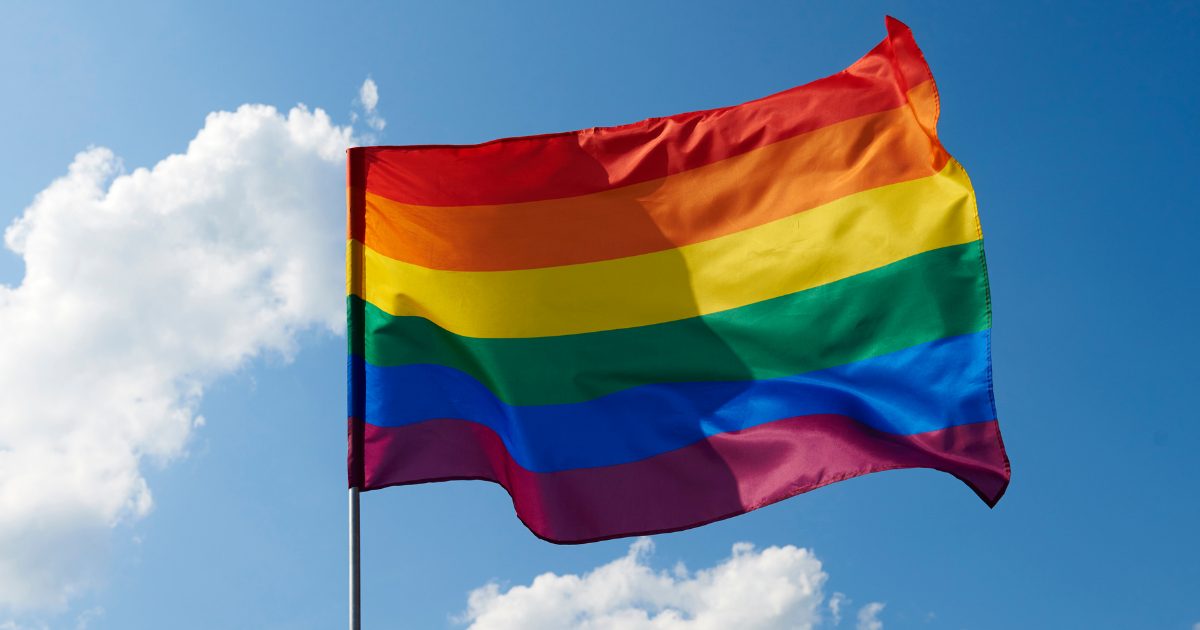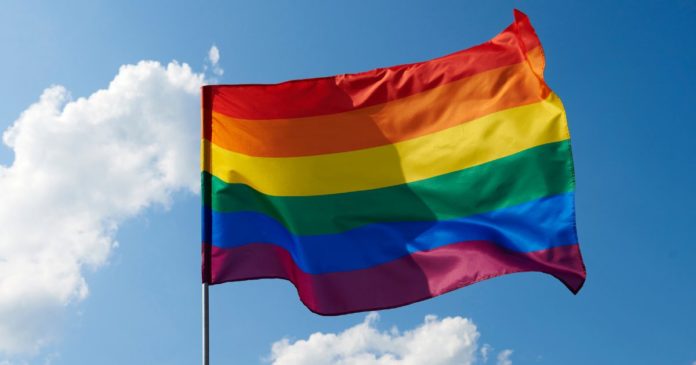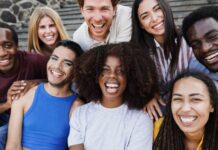
In order to secure the rights of the LGBTQIA+ communities, the criminalisation of inhumane practices like gay conversion therapy, also known as reparative therapy, must be the next step that the legislature and judiciary in India take. SIMRAN SONKAR and DEV VRAT ARYA write about the immediate need to address such forms of physical and mental torture.
——–
THE Supreme Court, in 2018, through its judgment in the case of Navtej Singh Johar and Ors. vs. Union of India decriminalized consensual sex among all adults, including those within the LGBTQIA+ community. The Court struck down a part of the colonial-era provision of Section 377 of the Indian Penal Code, which had criminalized ‘unnatural sex’—reversing its 2013 decision in Suresh Kumar Koushal vs. Naz Foundation. This was hailed as a landmark decision in the fight for equal rights by the LGBTQIA+ community in India.
LGBTQIA+ is an acronym used to represent Lesbian, Gay, Bisexual, Transgender, Queer, Intersex and Asexual individuals with a “+” at the end to acknowledge that there are non-cisgender and non-straight identities that are not included in the acronym.
LGBTQIA+ is an umbrella term that refers to those human beings who are non-heterosexual or non-cisgender and represent the various sexualities and gender-based communities worldwide. This term has come to add a more inclusive meaning to the previously used word “homosexuals”. The LGBTQIA+ movement is a social movement that advocates for the community’s rights, especially social equality, and fights against homophobia, transphobia, and so on.
In India, the rights and safeguards of the LGBTQIA+ community are still developing. While the Navtej Singh Johar judgment was essential in order to protect citizens in same-sex relationships and save them from being harassed by the government via legal sanctions, outside a few safe spaces concentrated in educated urban Indian circles, homophobia and discrimination are everyday realities.
The Supreme Court, in its landmark judgment of National Legal Services Authority v Union of India in 2014, had also interpreted Articles 14, 15 and 16 of the Indian Constitution as fundamental rights that ensure no citizen is discriminated against based on their gender identity or sexual orientation.
These supportive measures of the judiciary have yet to percolate down to the Indian society, as discrimination is common in the life of an LGBTQIA+ individual.
Also read: Section 377, 3 years on: Walking down the aisle of history
The detrimental impact of conversion therapy
Several practices are rampant in the country involving potentially changing the gender identity or sexual orientation of an individual belonging to the LGBTQIA+ community. The most inhumane among them is “gay conversion or reparative therapy”, which is a dangerous practice of targeting LGBTQIA+ youth and indoctrinating them to conform with heterosexual ideas of sexual orientation and gender identities.
This forceful imposition to change an individual’s sexual orientation and gender identity by using horrific psychological and physical activities causes immense trauma to those being subjected to it. There is no proven medical backing or scientific efficacy of these practices; often, parents, relatives or other members of society force youths to undergo these therapies as they express or come out to them as members of the LGBTQIA+ community.
Some questionable groups, organizations, and medical practitioners continue to make these treatments available as a “cure”, undermining the idea that sexual identities and gender orientations differ and go beyond heterosexual ideals.
These traumatic practices cause long term depression, PTSD, anxiety, and suicidal tendencies among youths.
In the U.S.A., conversion therapies use counselling, visual treatment, social skills, psychoanalytic training and religious means to reinforce the notion of “normal sexuality” among patients. In the past, medical practitioners would also conduct lobotomies to correct thoughts, and use electric shocks and confinement in mental institutions. These practices would disable individuals permanently, isolate them, and question their worth or normalcy. Right-wing groups in the USA support religious prayers to cure someone of their gender identity or sexuality.
However, in 2001, US Surgeon General Dr. David Satcher confirmed that these treatments were not effective. In 2007, an American Psychological Association task committee conducted a comprehensive assessment of the current literature on conversion therapy’s effectiveness. Their report stated that there was methodological and sound research on sexual orientation change efforts (SOCEs) and that “results of scientifically valid research indicate that individuals will be unlikely to be able to reduce same-sex attractions or increase other-sex sexual attractions through SOCE.”
The American Psychological Association stated in 2009 that, when giving support to persons disturbed by their own or others’ sexual orientation, it urges mental health practitioners to avoid misrepresenting the efficacy of sexual orientation change initiatives by advocating or promising change in sexual orientation. It concluded that the advantages claimed by participants in sexual orientation conversion programs are false.
There is overwhelming evidence that conversion therapy does not work, and some evidence also suggests that it is detrimental to LGBTQIA+ persons. On the other hand, there is considerable evidence to indicate that social discrimination causes LGBTQIA+ individuals severe medical, psychological, and other problems.
Lesbian, gay, bisexual, transgender, and questioning (LGBTQIA+) children, like heterosexual youngsters, typically establish self-identity throughout their pre-adolescent or adolescent years; this is true for all adolescents irrespective of their sexual orientation. Although these developmental stages impact student growth and achievement, they do not always imply sickness, mental illness, or emotional issues, nor do they necessarily suggest sexual activity.
Recent trends
In a first of its kind study conducted by OutRight Action International, an LGBTQIA+ Rights Group, it was clarified that even though the world in the 21st Century is becoming more aware of LGBTQIA+ identities, such awareness has also had an adverse impact in terms of greater attempts to promote pseudo-scientific methods to curb an individual’s identity. This poses an enormous risk to the lives and safety of people belonging to the queer community.
Conversion therapy acts as a form of physical abuse, forced change, and exorcism, leading to emotional and physical trauma. The individuals interviewed for this report stated that they were willing to share their stories and experiences to raise awareness and curb this menace.
The studies on the subject have described the practise as unethical, unscientific, ineffective and torturous. There has been growing conversation about making the ban on conversion therapy a United Nations mandate. However, it is difficult to change the ground reality until there is a change in societal understanding.
Out of the two-thirds surveyed on the issue, one-third stated that they had voluntarily sought conversion therapy as they feared non-conformity with societal standards and were affected by the homophobia and transphobia of their friends, families, faith, and community. The driving force of seeking such measures is feeling accepted and wanting to be treated as normal human beings.
According to the research, many conversion therapy organizations have renamed their services in recent years, utilizing scientific and human rights terminology in public materials.
The use of new technologies, such as social networking apps, has made it alarmingly simpler for such organizations to reach out to young LGBTQIA+ persons. In Singapore, a group called 3:16 Church, for example, advocates conversion therapy online. It promotes a ministry called TrueLove. Its website is “drenched in rainbow colours and calming language,” encouraging visitors to “come out and come home” and urging people to come to God and “overcome” their sin.
Outside the American and European continents, the impact of European imperialism and colonialism during the 19th and 20th centuries instilled anti-LGBTIQ attitudes – and legislation.
Studies have shown that as the religious right loses ground in battles against LGBTQIA+ people in Europe, North America, and Australia, particularly on same-sex marriage equality, they have increasingly gone to countries where they hope their message will resonate, like in Asia and Africa. Kapya Kaoma, a Zambian academic and Anglican priest, pinpointed a 1998 conference sponsored by the Archbishop of Canterbury in the United Kingdom where “African bishops and other officials were taught homosexuality could be cured” as a turning point in the spread of these practices.
As of August 2021, only four countries across the world have banned the practice of conversion therapy. The first nation was Ecuador in 2014, followed by Malta in 2015, Taiwan in 2018, and recently in 2020, Brazil imposed legal restrictions on conversion therapy.
Tragedies in India
A lesbian pair committed suicide in Tamil Nadu when one of the woman’s family members tried to push her into an arranged marriage after learning about their relationship. A transgender lady was beaten up by a crowd in West Bengal, resulting in her death, barely 12 days after the Union Cabinet enacted the Transgender (Protection of Rights) Bill in 2019.
A 21-year-old named Anjana Harish was found dead in Goa after allegedly being abused and forced into conversion therapy after coming out as bisexual. This incident sparked massive outrage. The anger comes in light of the failure of judicial protection to curb the societal practices still prevalent in India.
Despite the Supreme Court’s decriminalization of consensual gay intercourse under Section 377 in 2018 and the Indian Psychiatric Society’s declaration that homosexuality is not a mental illness, these views have not permeated most Indian households.
Homophobia, transphobia, biphobia, and other phobias about even minor deviations from “normalcy” are not going away overnight. They are the product of centuries of indoctrination. While widespread resentment resulted in a legal remedy due to protests and loud resistance, has the law ever effectively been a deterrence?
The state of Kerala, in the aftermath of Harish’s death, claimed that “any effort to treat a person to change sexual orientation or gender identity is unjustified and unlawful.” Yet even in Kerala, some practitioners still regard queer desires as an aberration that may be treated medically.
Also read: A transgender woman’s death, and the need for urgent revamp of sex reassignment surgery
How laws in India provide protection
Recently, the High Court of Madras, in S. Sushma and Anr. vs Commissioner of Police & Ors., directed the union and state government to prohibit mental and physical health practitioners’ attempts to change the sexual orientation of people from LGBTQIA+ communities medically. After this judgement, Tamil Nadu became the first state in India to prohibit the discriminatory practice of conversion therapy.
Justice N. Anand Venkatesh himself undertook various psycho-educative sessions to understand the daily biases, prejudices and problems that people of the LGBTQIA+ community face. In the order, he mentioned that “To be open, I am also trying to break my own preconceived notions about this issue and I am in the process of evolving, and sincerely attempting to understand the feelings of the Petitioners”. He also said that “ignorance is no justification for normalizing any form of discrimination”.
While upholding the constitutional right under Article 21 of the people from the LGBTQIA+ community, the Hon’ble High Court has enacted an emerging and progressive jurisprudence where judicial officials are also attempting to dispel preconceived notions and conceptions about sexuality and gender.
Also read: A big thank you for Justice Anand Venkatesh
However, in this judgement, the Court has failed to attribute criminal liability to such practices. These treatments impact the physical wellbeing of the patients, and leave long-term psychological impact on them. Patients are scarred for their entire life.
Such dreadful impact on their physical and mental health qualifies as ‘hurt’ under Section 319 of the Indian Penal Code. According to the erstwhile Sind High Court in Jashanmal Jhamatmal v. Brahmanand Sarupanand (1943), the hurt can be mental or physical. The High Court said that “infirmity denotes an unsound or unhealthy state of body or mind and a state of temporary mental impairment or hysteria or terror would constitute infirmity, within the meaning of that expression in section 319 IPC.”
The standards and obligations set by international conventions of which India is a part also support criminalizing conversion therapy. Article 5 of the Universal Declaration of Human Rights and Article 7 of the International Covenant on Civil and Political Rights make it the obligation of the State to protect its citizens from torture or cruel, inhuman or degrading treatment or punishment. According to the WHO, the right to health includes freedom from torture or non-consensual medical treatment and experimentation.
Therefore, there is a need for courts in India to either treat the act of conversion therapy as an offence of ‘hurt’ or create specific provisions under criminal law that address this problem. While acceptance can be facilitated by legislation to a certain extent, the more significant challenge remains in shifting people’s mindsets towards LGBTQIA+ people and treating them with dignity and respect as enumerated under Article 21 of the Indian Constitution.
(Simran Sonkar & Dev Vrat Arya are students of law at the West Bengal National University of Juridical Sciences. They identify themselves as Dalit-Queers. The views expressed are personal.)








